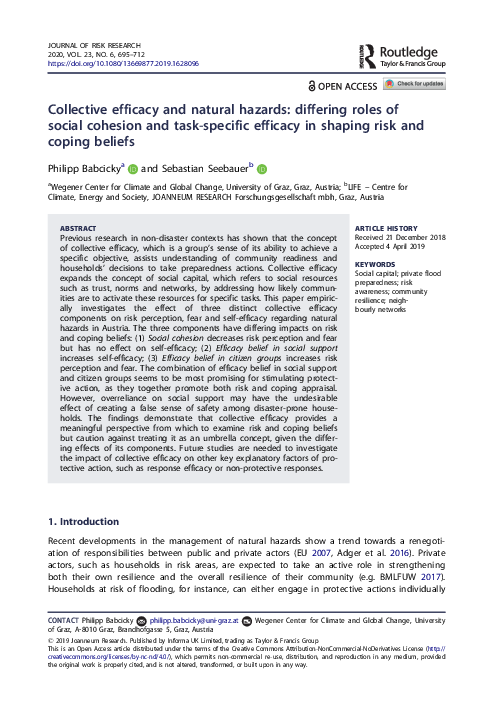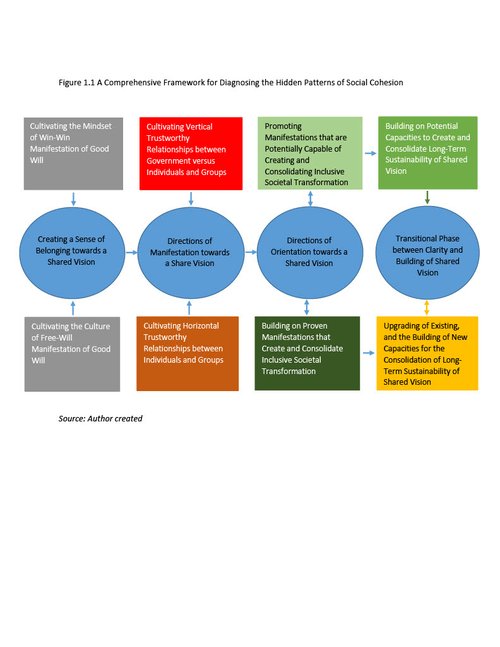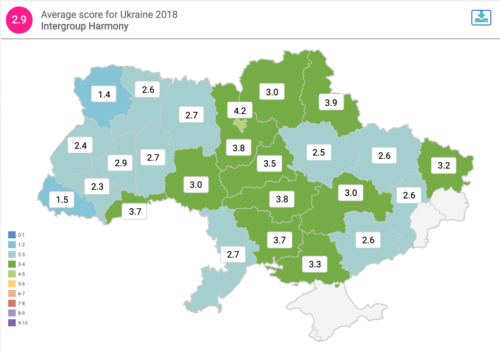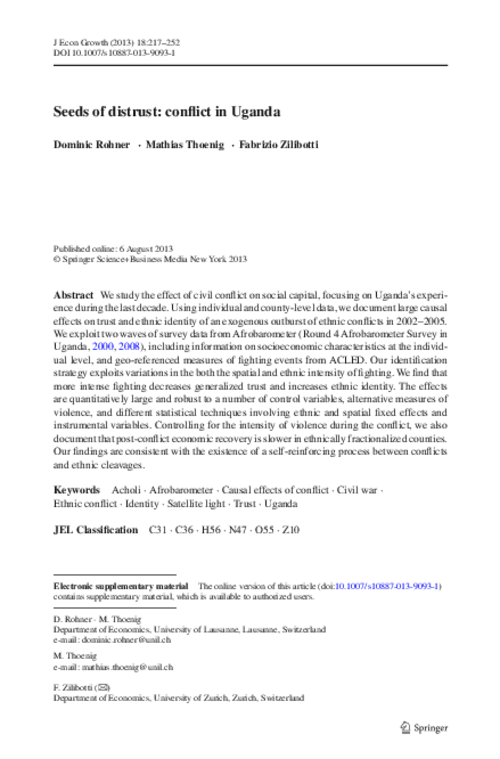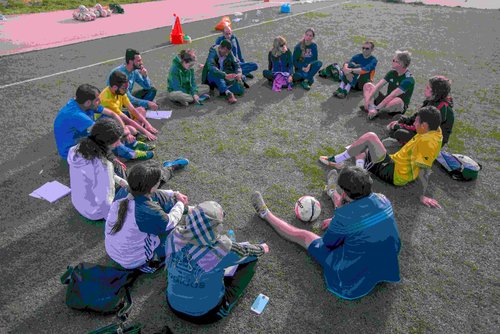Collective efficacy and natural hazards: Differing roles of social cohesion and task-specific efficacy in shaping risk and coping beliefs
Key facts
Cooperation
Summary
Previous research in non-disaster contexts has shown that the conceptof collective efficacy, which is a group’s sense of its ability to achieve aspecific objective, assists understanding of community readiness andhouseholds’ decisions to take preparedness actions. Collective efficacyexpands the concept of social capital, which refers to social resourcessuch as trust, norms and networks, by addressing how likely communitiesare to activate these resources for specific tasks. This paper empiricallyinvestigates the effect of three distinct collective efficacycomponents on risk perception, fear and self-efficacy regarding naturalhazards in Austria. The three components have differing impacts on riskand coping beliefs: (1) Social cohesion decreases risk perception and fearbut has no effect on self-efficacy; (2) Efficacy belief in social supportincreases self-efficacy; (3) Efficacy belief in citizen groups increases riskperception and fear. The combination of efficacy belief in social supportand citizen groups seems to be most promising for stimulating protectiveaction, as they together promote both risk and coping appraisal.However, overreliance on social support may have the undesirableeffect of creating a false sense of safety among disaster-prone households.The findings demonstrate that collective efficacy provides ameaningful perspective from which to examine risk and coping beliefsbut caution against treating it as an umbrella concept, given the differingeffects of its components. Future studies are needed to investigatethe impact of collective efficacy on other key explanatory factors of protectiveaction, such as response efficacy or non-protective responses.
